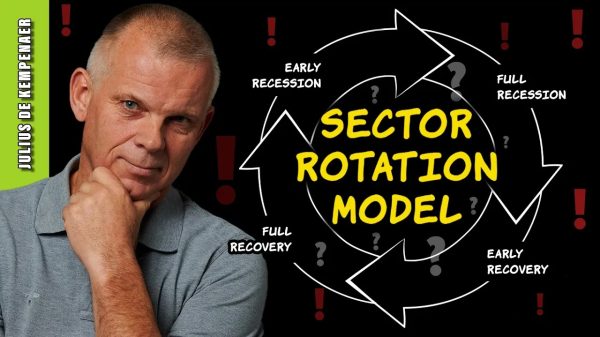The convergence of agriculture and technology, often referred to as “agtech,” has become a focal point in modern farming practices
While traditional methods have sustained agriculture for centuries, the adoption of cutting-edge technologies is reshaping the industry’s landscape. The emergence of agtech trends signifies a paradigm shift towards more efficient, sustainable, and data-driven farming practices. Unlike conventional approaches, which rely heavily on manual labor and intuition, agtech leverages advanced digital solutions to optimize every aspect of the agricultural value chain.
In this article, we delve into the top agtech trends for 2023 and beyond, exploring how these innovations are revolutionizing the way we cultivate, harvest, and distribute food. By harnessing the power of artificial intelligence, internet of things (IoT), blockchain, robotics, and data analytics, farmers and agritech companies are unlocking new opportunities for increased productivity, profitability, and environmental stewardship. This comprehensive analysis aims to provide software developers with valuable insights into the transformative potential of agtech, encouraging them to explore this dynamic and rapidly evolving field.
Artificial Intelligence in Precision Agriculture
Artificial intelligence (AI) has emerged as a game-changer in precision agriculture, offering unparalleled insights into crop health, soil conditions, and environmental factors. One of the most significant agtech trends is the integration of AI-driven solutions to optimize farming practices and maximize yields while minimizing resource usage. Unlike traditional methods that rely on manual observation and analysis, AI algorithms process vast amounts of data from satellite imagery, drones, and IoT sensors to provide real-time recommendations for crop management.
In addition to monitoring plant health and detecting pests and diseases, AI-powered systems can forecast weather patterns, predict crop yields, and optimize irrigation schedules. By harnessing machine learning algorithms, farmers can make data-driven decisions that enhance productivity and profitability while reducing environmental impact. As agtech continues to evolve, we can expect AI to play an increasingly vital role in shaping the future of precision agriculture, enabling more efficient resource allocation and sustainable food production practices.
Internet of Things (IoT) and Sensor Technology
The Internet of Things (IoT) has revolutionized agriculture by enabling the seamless integration of sensors, devices, and data analytics platforms across the farm ecosystem. One of the prominent agtech trends is the proliferation of IoT-enabled solutions that provide real-time monitoring and control of agricultural operations. From soil moisture sensors and weather stations to smart irrigation systems and livestock tracking devices, IoT technologies offer unprecedented visibility into farm conditions and performance metrics.
By leveraging IoT and sensor technology, farmers can optimize resource usage, improve crop yields, and enhance livestock management practices. For example, IoT-enabled irrigation systems can automatically adjust water flow based on soil moisture levels, reducing waste and conserving water. Similarly, livestock monitoring devices equipped with GPS and biometric sensors can track animal health and behavior, enabling proactive intervention to prevent disease outbreaks or optimize feeding schedules.
Blockchain Solutions for Supply Chain Transparency
Blockchain technology has emerged as a disruptive force in agriculture, offering unparalleled transparency, traceability, and trust in the food supply chain. One of the most significant agtech trends is the adoption of blockchain-based solutions to address issues related to food safety, authenticity, and provenance. By recording every transaction on an immutable ledger, blockchain enables stakeholders to track the journey of food products from farm to fork, ensuring accountability and integrity at every stage of the supply chain.
In addition to enhancing transparency and traceability, blockchain solutions can help mitigate risks associated with food fraud, contamination, and counterfeit products. By providing consumers with access to detailed information about the origin, production methods, and handling practices of food items, blockchain empowers them to make informed choices and support sustainable, ethical food production practices. As agtech continues to evolve, we can expect blockchain to play an increasingly vital role in promoting trust and transparency in the global food system.
Robotics and Automation in Farming
Robotics and automation are revolutionizing agriculture by augmenting human labor with intelligent machines capable of performing a wide range of tasks with precision and efficiency. One of the most significant agtech trends is the adoption of robotic systems for planting, harvesting, and post-harvest processing operations. From autonomous tractors and drones to robotic arms and sorting machines, robotics technologies offer unprecedented opportunities to streamline farm operations and increase productivity.
By leveraging robotics and automation, farmers can overcome labor shortages, reduce operational costs, and improve overall efficiency. For example, autonomous tractors equipped with GPS and computer vision can navigate fields with precision, planting seeds and applying fertilizers with optimal spacing and timing. Similarly, robotic harvesters can identify and pick ripe fruits and vegetables with speed and accuracy, reducing waste and increasing yield. As agtech continues to advance, we can expect robotics and automation to play an increasingly vital role in shaping the future of farming.
Sustainable Agriculture Practices with Data Analytics
Sustainable agriculture is a pressing concern in the face of climate change, resource depletion, and population growth. Agtech trends are driving the adoption of data analytics to optimize farming practices and minimize environmental impact. By harnessing the power of big data, machine learning, and predictive analytics, farmers can make informed decisions that promote soil health, water conservation, and biodiversity conservation.
One of the most significant applications of data analytics in agriculture is precision farming, which involves the targeted application of inputs such as water, fertilizers, and pesticides based on real-time data and analysis. By optimizing resource usage and minimizing waste, precision farming enables farmers to increase productivity while reducing environmental footprint. Additionally, data analytics can help identify trends and patterns in weather, pests, and crop performance, enabling proactive management strategies to mitigate risks and maximize yields.
Conclusion
In conclusion, the top agtech trends for 2023 and beyond are transforming the agricultural industry, offering unprecedented opportunities for increased productivity, profitability, and sustainability. From artificial intelligence and IoT to blockchain, robotics, and data analytics, these innovative technologies are reshaping the way we produce, distribute, and consume food. As software developers, embracing these trends and developing innovative solutions can help address some of the most pressing challenges facing the global food system. By harnessing the power of agtech, we can create a more resilient, equitable, and sustainable future for agriculture and society as a whole.
The post Top 6 Agriculture Technology Trends for 2023 and Beyond appeared first on IoT Business News.

































